Whether it be in-person in Santa Cruz or virtual appointments, Dr. LeTa uses the Chinese Medical paradigm as a lens to make the connections necessary to devise the best path for you to move forward with what’s ailing you and your health goals.
Please familiarize yourself with Chinese Medicine and some of the tools she uses. Along with Chinese Medicine, Dr. LeTa uses technology and an array of other tools and lens to support you in the ways she sees fit.
Traditional Chinese medicine is one of the oldest continuous systems of medicine in history, with recorded instances dating as far back as two thousand years before the birth of Christ. This is in sharp contrast to the American or Western forms of health care, which have been in existence for a much shorter time span (the American Medical Association, the largest health care member association in the United States, was formed in 1847, some 3,800 years after the first mention of traditional Chinese medicine).
Chinese medicine is quite complex and can be difficult for some people to comprehend. This is because TCM is based, at least in part, on the Daoist belief that we live in a universe in which everything is interconnected. What happens to one part of the body affects every other part of the body. The mind and body are not viewed separately, but as part of an energetic system. Similarly, organs and organ systems are viewed as interconnected structures that work together to keep the body functioning.
Many of the concepts emphasized in traditional Chinese medicine have no true counterpart in Western medicine. One of these concepts is qi(pronounced “chi”), which is considered a vital force or energy responsible for controlling the workings of the human mind and body. Qi flows through the body via channels, or pathways, which are called meridians. There are a total of 20 meridians: 12 primary meridians, which correspond to specific organs, organ systems or functions, and eight secondary meridians. Imbalances in the flow of qi cause illness; correction of this flow restores the body to balance. Other concepts (such as the Yin/Yang and Five Element Theories) are equally important in order to have a true grasp of traditional Chinese medicine, and will be discussed at length elsewhere on this site.
Many people often equate the practice of acupuncture with the practice of traditional Chinese medicine. This is not entirely true. While acupuncture is the most often practiced component of traditional Chinese medicine, it is simply that – a component, an important piece of a much larger puzzle. Traditional Chinese medicine encompasses several methods designed to help patients achieve and maintain health. Along with acupuncture, TCM incorporates adjunctive techniques such as acupressure and moxibustion; manipulative and massage techniques such as tuina and gua sha; herbal medicine; diet and lifestyle changes; meditation; and exercise (often in the form of qigong or tai chi).
Traditional Chinese medicine should not also be confused with “Oriental medicine.” Whereas traditional Chinese medicine is considered a standardized version of the type of Chinese medicine practice before the Chinese Revolution, Oriental medicine is a catch-all phrase for the styles of acupuncture, herbal medicine, massage and exercise that have been developed and practice not only in Asia, but world-wide.
Although the principles of traditional Chinese medicine may be difficult for some to comprehend, there is little doubt of TCM’s effectiveness. Several studies have reported on traditional Chinese medicine’s success in treating a wide range of conditions, from nausea and vomiting to skin disorders, tennis elbow and back pain. Many Western-trained physicians have begun to see the benefits traditional Chinese medicine has to offer patients and now include acupuncture — at least on a limited basis — as part of their practice. More Americans are also using acupuncture, herbal remedies and other components of traditional Chinese medicine than ever before. The reasons for this vary, but the increasing interest in, and use of, TCM is due in large part to its effectiveness, affordability and lack of adverse side-effects compared to Western medicine.
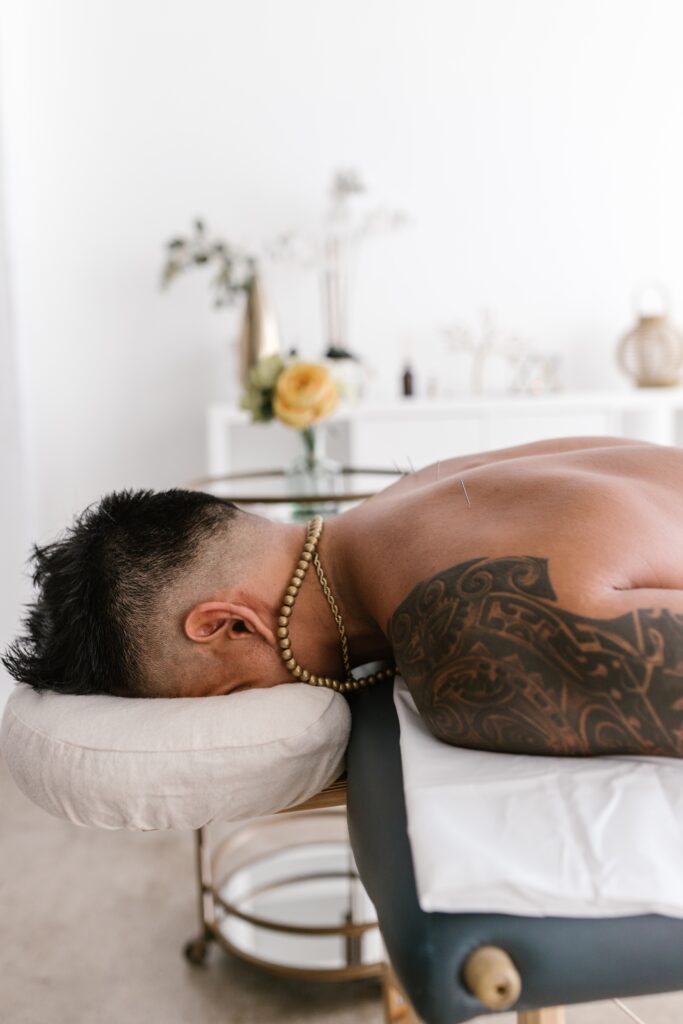

At the core of this ancient medicine is the philosophy that Qi (pronounced “chee”), or vital energy, flows throughout the body. Qi animates the body and protects it from illness, pain and disease. A person’s health is influenced by the quality, quantity and balance of Qi.
How does Qi move?
Qi flows through specific pathways called meridians. There are fourteen main meridians inside the body. The diagram to the left shows the meridian pathways in the body. Each of these is connected to specific organs and glands.
Meridian pathways are like rivers flowing inside the body. Where a river flows, it transports life-giving water that provides nourishment to the land, plants and people. Similarly, where meridian pathways flow, they bring life-giving Qi that provides nourishment to every cell, organ, gland, tissue and muscle in the body.
How is Qi disrupted?
An obstruction to the flow of Qi is like a dam. When Qi becomes backed up in one part of the body, the flow becomes restricted in other parts. This blockage of the flow of Qi can be detrimental to a person’s health, cutting off vital nourishment to the body, organs and glands.
Physical and emotional trauma, stress, lack of exercise, overexertion, seasonal changes, poor diet, accidents, or excessive activity are among the many things that can influence the quality, quantity and balance of Qi.
Normally, when a blockage or imbalance occurs, the body easily bounces back, returning to a state of health and well-being. However, when this disruption is prolonged or excessive, or if the body is in a weakened state, illness, pain, or disease can set in.
Blockage of the flow of Qi can be detrimental to a person’s health and leads to various signs and symptoms or health concerns.
Acupuncture is part of the holistic system of healing known as Traditional Chinese Medicine (TCM) or also known as East Asian medicine. Acupuncture improves the overall function of the body and returns your body to your optimal state of health and wellness. Acupuncture is the gentle insertion of very fine needles into specific parts (points) on the body. This process stimulates movement of energy within the body, allowing natural healing to take place. These points are selected based on over 3,000 years of experience in China and your acupuncturists’ extensive Master’s level didactic and clinical training.
Several thousand years ago, East Asian practitioners discovered that the body forms disharmonies as a result of the various physical and mental stresses of life. Oriental medical theory explains these disharmonies as an imbalance of opposing forces called yin and yang. This imbalance disrupts the movement of the body’s vital energy (qi) along the meridian pathways, which are channels through which the body’s energy is thought to flow. Acupuncture restores the smooth flow of qi. By inserting and manipulating needles at specific points on the body, I am able to return the body to its natural balance and promote the body’s ability to heal itself.
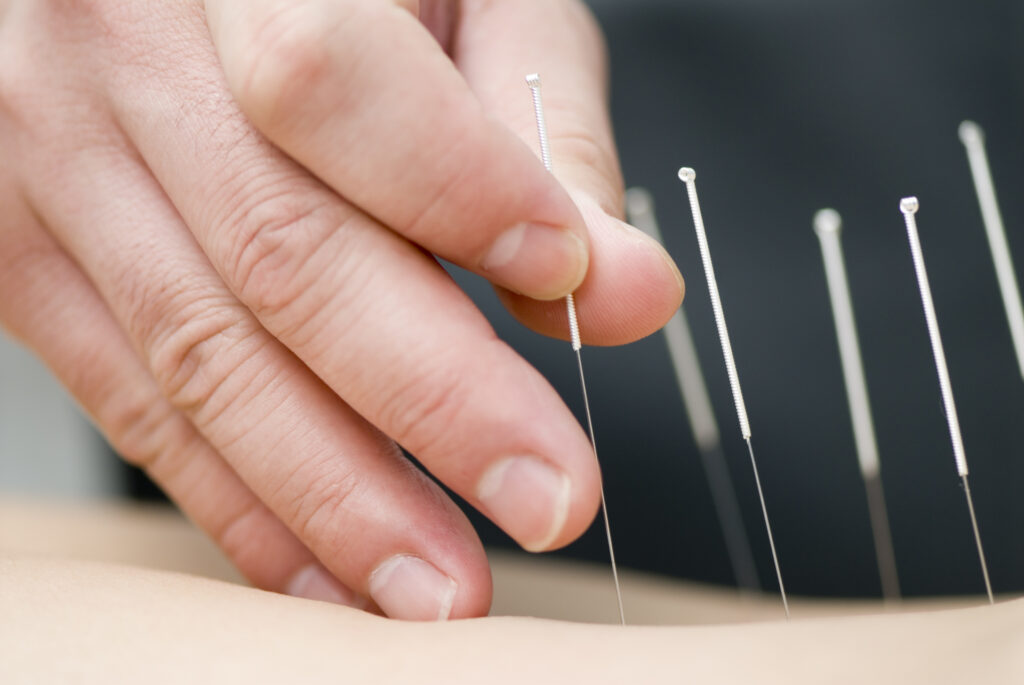
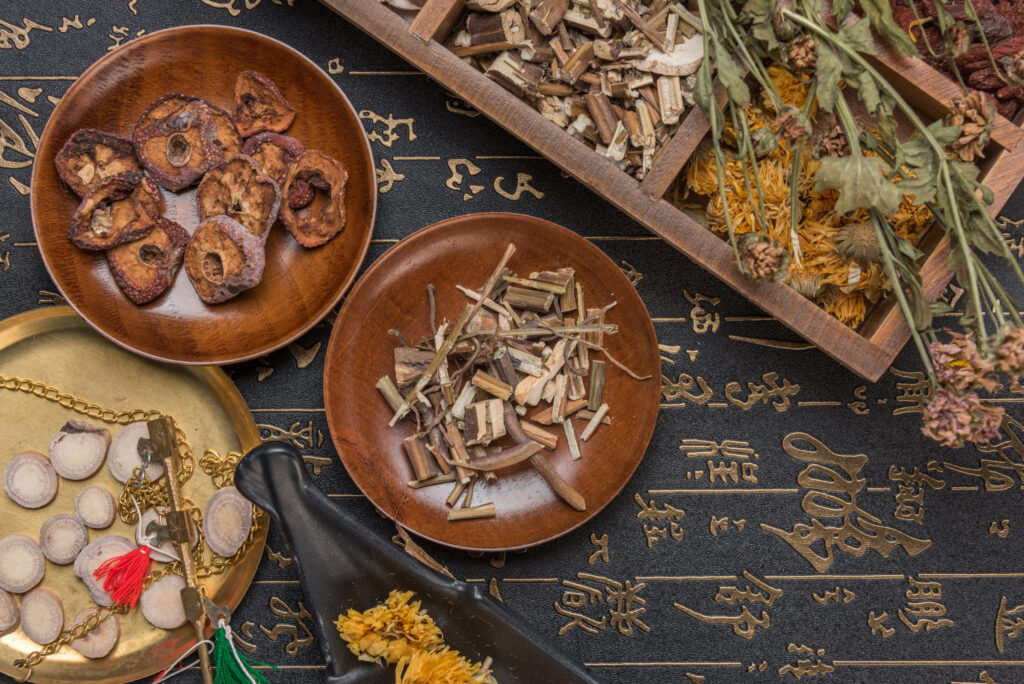
Chinese herbal medicine is the primary treatment method within traditional Chinese medicine. There are more than 300 Chinese herbs that date back 2,000 years and are shown to enhance your health and support your Western treatment.
Chinese medicine is based on a constitutional approach. Instead of prescribing a specific supplement/medication for one condition, Chinese medicine recognizes patterns and a group of symptoms to identify and treat the root of the issue.
Chinese granule herbs have been carefully selected by Thrive. These sources test quality and purity of all herbal extracts. The sources test for heavy metals and pesticides. A certificate of analysis is provided on each batch of herbs to guarantee this.
Acupuncture and Chinese medicine are safe, effective and drug-free therapies that can help address a wide variety of common ailments and problems.
The science of Traditional Chinese medical dietary therapy involves the understanding the properties of foods and their affects on health as well the use of food for preserving health and preventing and treating illnesses.
Four principles of TCM food therapy including light eating, balancing the “hot” and “cold” nature of food, the harmony of the five flavors of food, and consistency between dietary intake and the health condition an individual has.
The nature of food is defined on the same basis as in Traditional Chinese Medicine where foods, as with herbal medicines, are grouped by taste. The five principal categories taste are sour, sweet, bitter, pungent and salty. Based on the five element theory, Traditional Chinese Medicine holds that each taste favors an internal organ: sour favors the liver, sweet favors the spleen, bitter favors the heart, pungent favors the lungs, and salty favors the kidney. Generally, each taste has a different impact on the human body.
The nature of food is a fundamental principle in Chinese dietary therapy. Foods are classified into coldness, coolness, warmth, and heat, “the four natures”. In practice, these natures divide into two basic kinds – cold and hot. Regulating the cold and hot of foods is an important aspect of diet regulation practiced by Chinese medical dietary therapy.
Traditional Chinese Medicine believes that health exists when the human body is in a harmonious state. Upsetting the balance of the body results in disease.
Traditional Chinese medical dietary therapy has been in practice for thousands of years in China. Terms most closing representing the concept of dietary therapy are “shi liao” or “shi zhi,” meaning food diet therapeutics. The treatment or therapy study of Traditional Chinese medical dietary therapy includes the following:
Firstly, the investigation of the nature and flavors of food, the combination of therapy with Traditional Chinese Medicine, and the use of food itself to prevent or treat diseases. In Traditional Chinese Medicine, food itself is a remedy. How much and when to take food should be dictated by the nature of the body. Simply speaking, this means eating healthy food in a healthy manner.
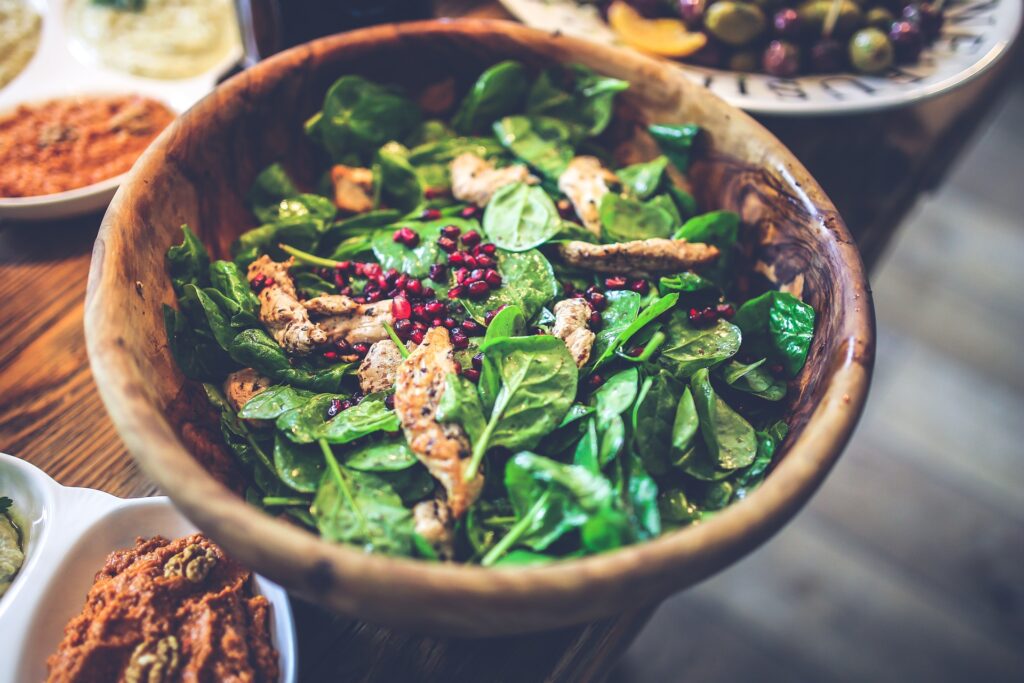
Secondly, investigating the curative effects achieved by carefully selecting certain kinds of Chinese medical herbs and adding them to food to complement each other. For instance, rice porridge is considered readily digestible and nutritionally beneficial to many kinds of patients. However, when radix discoreae, poria, or coix seeds are added to porridge, it would have an anti-diarrhea effect because the function of those herbs are used to strengthen the spleen and stomach and improve digestion.
An early medical writer, Sun Se Miao, wrote in the 6th century that “A true doctor first finds out the cause of the disease, and having found that out, he tries to cure it first by food. When food fails, then he prescribes Traditional Chinese Medicine.” Modern science has only recently realized what has been a part of Traditional Chinese Medicine for centuries – the importance of diet.

Qigong is a Chinese style of meditation healing that integrates physical postures, breathing techniques and focused intention.
Qigong is a Chinese meditation system practiced for health maintenance, illness recovery, healing and increased vitality. Qigong involves a posture, breathing technique(s) and mental focus. Qigong means, cultivating energy.
It is designed to support the individual to become consciously aware of the bodily functions including the energetic, informational, emotional, subconscious and collective subconscious levels.
East Asian medicine includes a variety of hands-on bodywork to alleviate acute and chronic conditions. Hands on therapy methods that may be included in your treatment include: Tuina, cupping, Guasha, hot stones and moxibustion.
Tuina is a therapeutic form of massage that includes therapeutic rhythmic compression techniques that facilitate healing. Tuina enhances lymphatic circulation to ease pain and stagnation in the body.
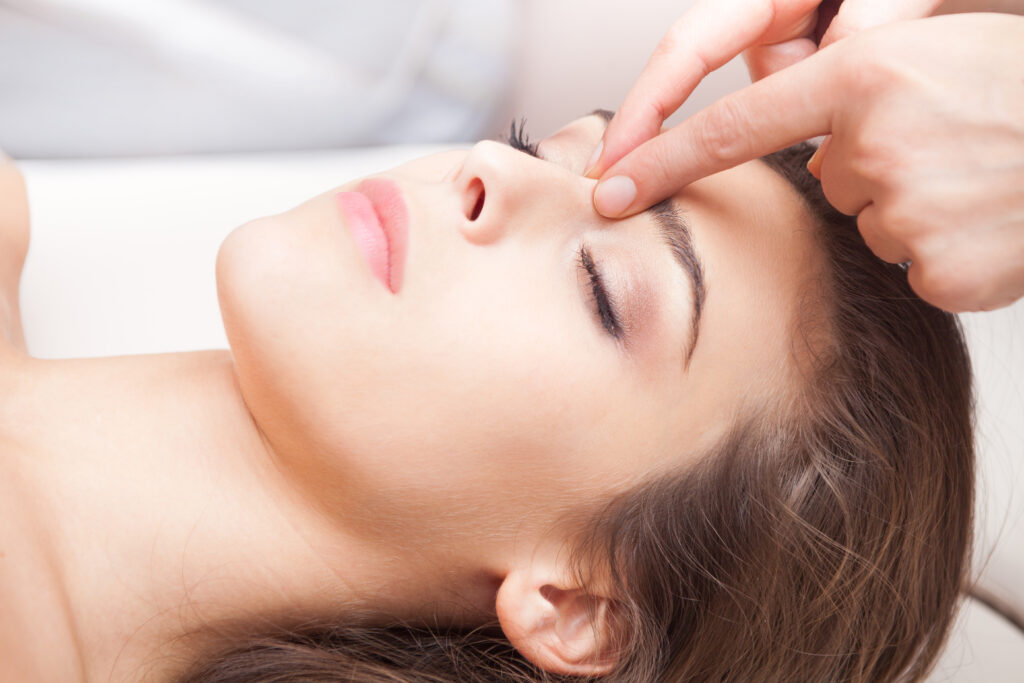
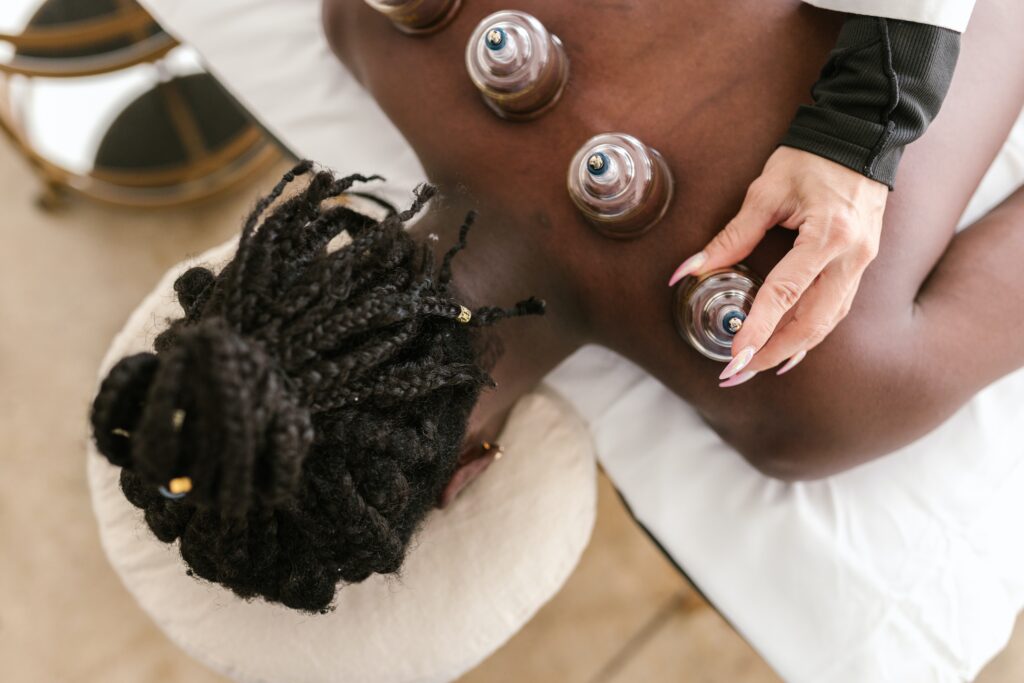
Cupping is an ancient technique, used in many cultures, in which a special cup is applied to the skin and held in place by suction. The suction draws superficial tissue into the cup, which may either be left in place or moved along the body. Cupping brings fresh blood to the area and helps improve circulation.
Traditional cupping, sometimes referred to as “fire cupping,” uses heat to create a vacuum-like suction inside of glass cups. In modern times, cups that use a small pump to create suction have also been introduced. This method is often combined with an acupuncture treatment.
Moxibustion involves the heating of acupuncture points with smoldering mugwort herb (known as moxa).
Moxibustion stimulates circulation, counteracts cold and dampness in the body, and promotes the smooth flow of blood and qi.
This safe, non-invasive technique may be used alone, but it is generally used in conjunction with acupuncture treatment.

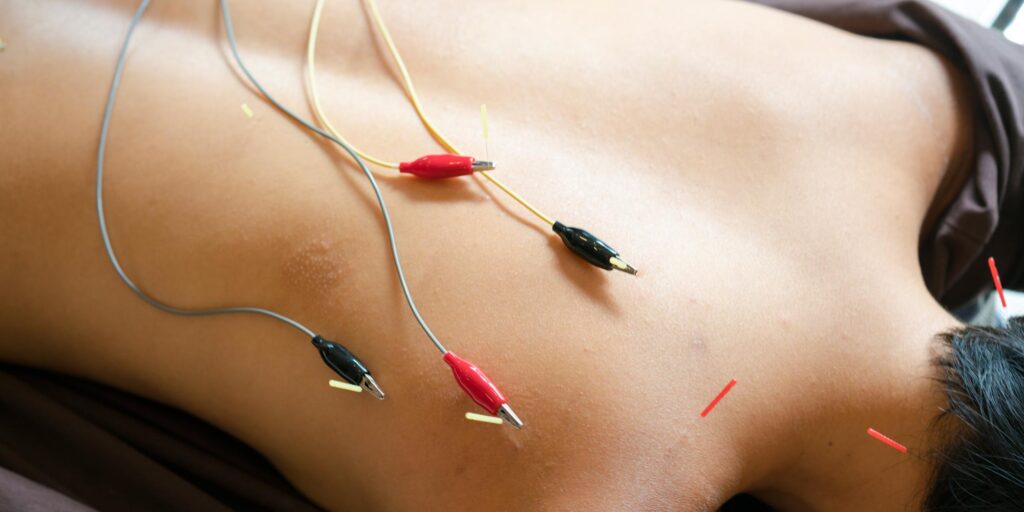
E-stim involves attaching wires to acupuncture needles and stimulating the selected acupuncture points with various electrical currents.
An extremely effective method for pain reduction, E-Stim is often used in various orthopedic issues including acute and chronic injury, joint pain, increasing mobility post injury or surgery.
It is also an optional method for post-stroke cases and PTSD. The electrical currents are stimulating yet comfortable so that patients are able to relax during the procedure.
Guasha is a technique where a stone, jade or spoon is used as as a tool to apply pressured strokes over an area of the body. This “scraping” technique increases circulation to the area, decreases swelling and eliminates toxins.
Also known as spooning or coining, a ceramic spoon or another tool is used to scoop the skin in rhymic motion.
This technique promotes the circulation of blood and “qi”, relieving tension and discomfort. This method is often combined with an acupuncture treatment.
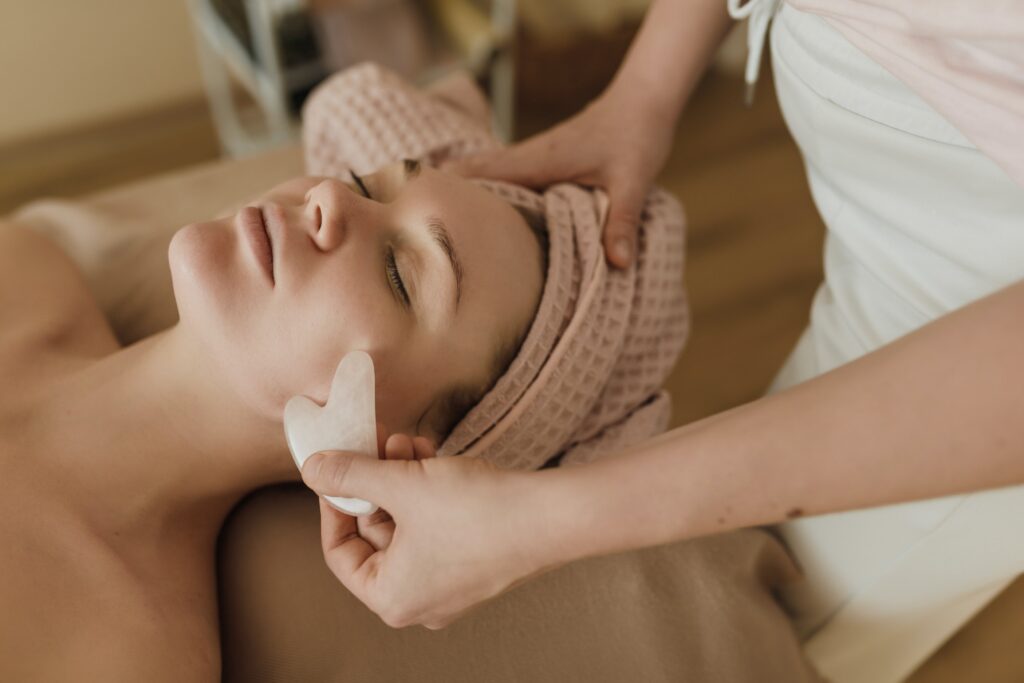
*Clinic Location is at 3335 Mission Drive, Santa Cruz, CA 95065 (near Domincan Hospital for reference).
All appointments (except for Acupuncture, for obvious reasons) can be with Dr. LeTa through Zoom online, if you so choose.